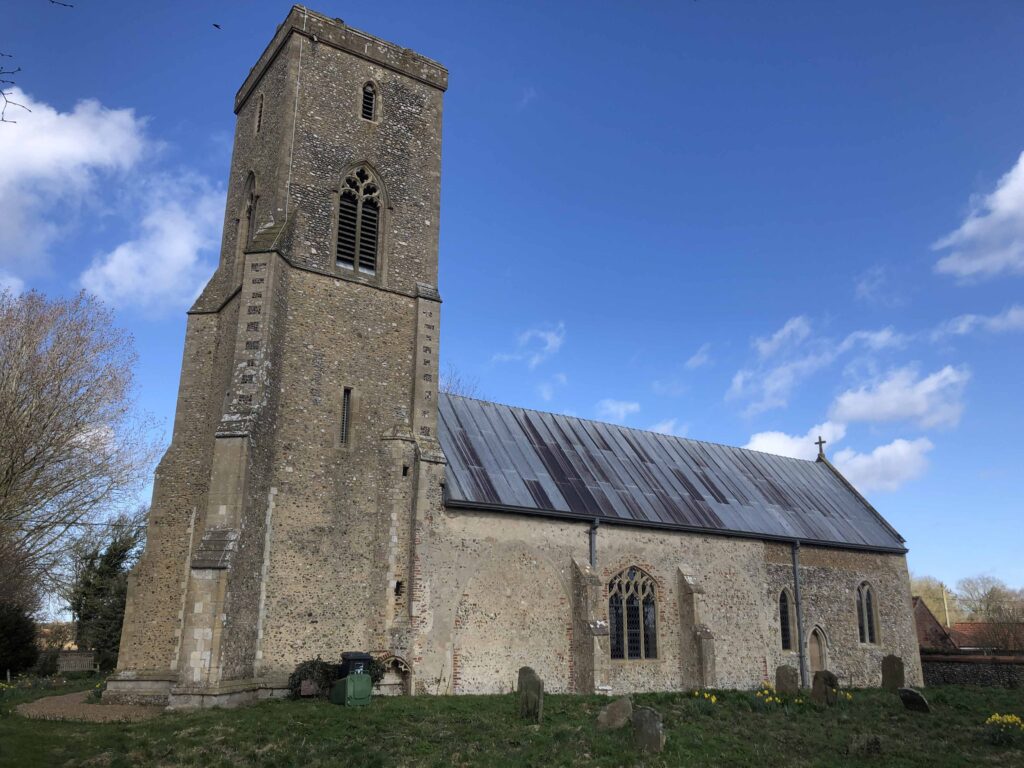All Saints Church, Sharrington

The church, as we know it, did not exist in 1086, Domesday, the nearest churches in the Hundred of Holt being at Saxlingham and Thornage. These churches were, obviously, Pre- Conquest, such churches being generally known as Saxon Churches. This does not mean that there was no place of worship in Sharrington. Probably, an insignificant little building was not worthy of mention.
In the sixth century, when Augustine was sent by the Pope to convert the English, he instructed his followers to site the new places of worship on the old Pagan sites, where they had always worshipped their gods. The site of All Saints Church could have been a place of worship for a long, long time.
The present building of All Saints Church would seem to have commenced in the late 13th century and was able to accept its first Rector, Simon de Morton, in 1323. Of course, being a Norman French Roman Catholic Priest, conducting the Service in Latin, it is doubtful whether many of the congregation understood any of it, but they would have been taught the responses by rote.
The Bible was first translated into English in 1380, but, even then, the services continued to be held in Latin. Building work continued, and the church tower was constructed, mainly in Flintstone, as was the rest of the building, later in the 14th Century. The interior walls of the church would have been decorated with colourful religious paintings.
In 1523 the church had three chantry priests who sang mass for those who paid a legacy for the salvation of their souls. A chantry priest may well have resided in the tower room, on the first floor, where a chamber with a fireplace can be found. Although there remains the vestige of where three bells were hung only one survives, made by Thomas Newman of Norwich in 1715.
The church brasses have been removed from their original location and mounted on the wall of the church.
- John Daubeney, killed in defending Caister Castle for the Pastons in 1469.
- John Botolff rector 1458-1486.
- Inscription for John Sharrington, gentleman, 1498
- Thomas Dawbeney, 1527.
- Christopher Daubeney, wife Phillippa and their 5 sons and 3 daughters dated 1587.
The church was described in 1734 by Thomas Martin as:
…”a square steple with 4 bells, church, two isles, and cross isles (transepts) leaded. A north vestry decay’d. Chancell tiled. A new north porch built with brick.”
Sometime between Thomas Martins visit and the 1820’s, when a lithograph was produced of the church, the aisles and transepts were removed.
The chancel and vestry were restored in 1880 and the floor tiled. The Rector’s stall is dated 1879 and bears a carved beehive and barrel, replicated in the village sign.
Further restorations were carried out by the Lord of the Manor – Sir Alfred Jodrell – in 1908.
The 66 (20.12 metre) foot high tower is an ordnance survey triangulation point thanks to its amazing view of ten local church towers.
By Peter Chapman 2000
